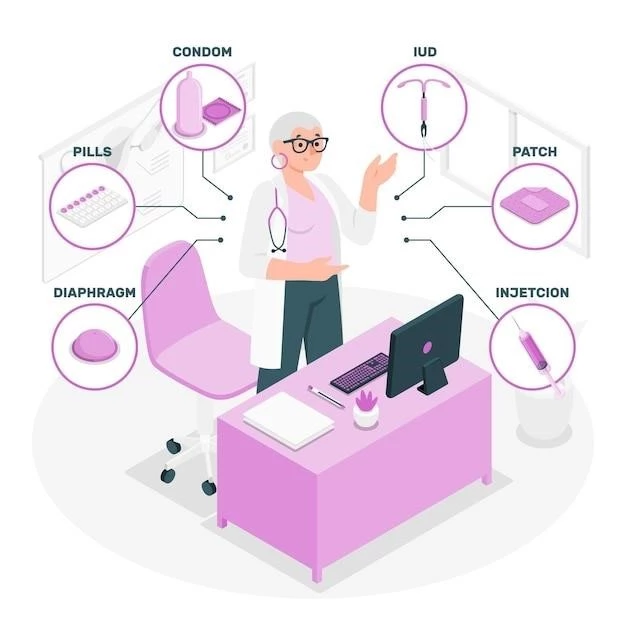Introduction to Ulbright-Hodes Syndrome
The Ulbright-Hodes Syndrome‚ also known as Renal dysplasia-limb defects syndrome‚ is a rare genetic disorder affecting various bodily systems. It is characterized by specific anomalies such as renal dysplasia‚ growth retardation‚ limb abnormalities‚ and a distinctive facial appearance.
Overview of Ulbright-Hodes Syndrome
The Ulbright-Hodes Syndrome‚ also referred to as Renal dysplasia-limb defects syndrome‚ is a rare genetic disorder characterized by renal dysplasia‚ growth retardation‚ limb abnormalities‚ and a unique facial appearance. It affects various bodily systems and is often identified by specific anomalies such as phocomelia‚ radiohumeral fusion‚ and rib abnormalities. This syndrome presents significant challenges and is associated with severe health complications.
Characteristics and Symptoms
The Ulbright-Hodes Syndrome is rare‚ with distinct features like renal dysplasia‚ limb abnormalities‚ and a unique facial appearance.
Key Features of Ulbright-Hodes Syndrome
The Ulbright-Hodes Syndrome manifests with renal dysplasia‚ growth retardation‚ limb abnormalities like phocomelia or mesomelia‚ radiohumeral fusion‚ ribs anomalies‚ external genitalia anomalies‚ and a distinct ″potter-like″ facial appearance. This rare genetic disorder affects multiple body systems‚ often leading to severe health complications and a challenging prognosis.
Common Symptoms Associated with Ulbright-Hodes Syndrome
Common symptoms of Ulbright-Hodes Syndrome include growth retardation‚ limb abnormalities like phocomelia or mesomelia‚ radiohumeral fusion‚ rib abnormalities‚ external genitalia anomalies‚ and a distinctive ″potter-like″ facial appearance. These symptoms often lead to severe health complications and a challenging prognosis‚ making early detection and management crucial for individuals affected by this rare genetic disorder.
Causes and Risk Factors
Ulbright-Hodes Syndrome is very rare and primarily caused by genetic mutations affecting the development of multiple body systems. Certain risk factors may predispose individuals to this complex genetic disorder.
Etiology of Ulbright-Hodes Syndrome
Ulbright-Hodes Syndrome is primarily caused by genetic mutations that impact the development of various body systems‚ including the kidneys‚ limbs‚ and external genitalia. These mutations lead to characteristic features such as renal dysplasia‚ growth retardation‚ limb abnormalities‚ and a recognizable facial appearance. In some cases‚ specific genetic abnormalities play a role in the manifestation of this rare genetic disorder.
Possible Risk Factors for Developing Ulbright-Hodes Syndrome
Preliminary studies suggest that genetic mutations affecting the development of various body systems may play a key role in the development of Ulbright-Hodes Syndrome. Factors contributing to the manifestation of this complex genetic disorder are still under investigation‚ emphasizing the need for further research to enhance our understanding of its etiology and risk factors.

Diagnosis and Screening
A case of Ulbright-Hodes Syndrome in a 7-year-old boy with distinctive features like phocomelia‚ hypoplastic kidneys‚ and short stature. The syndrome is often diagnosed based on renal dysplasia‚ limb abnormalities‚ and other characteristic symptoms observed in affected individuals.
Methods Used for Diagnosing Ulbright-Hodes Syndrome
The diagnosis of Ulbright-Hodes Syndrome typically involves clinical evaluation of symptoms like renal dysplasia‚ growth retardation‚ limb abnormalities‚ and distinctive facial features. Imaging studies‚ genetic testing‚ and detailed medical history assessment are crucial to confirm the presence of this rare genetic disorder. Prenatal diagnosis may also be considered in specific cases to provide early detection and appropriate management strategies.
Importance of Prenatal Diagnosis in Ulbright-Hodes Syndrome
Prenatal diagnosis of Ulbright-Hodes Syndrome plays a crucial role in identifying the characteristic features like renal dysplasia‚ growth retardation‚ limb abnormalities‚ and distinctive facial appearance early in pregnancy. Early detection enables healthcare providers to offer appropriate management strategies and support to families affected by this rare genetic disorder.
Treatment Options
In managing Ulbright-Hodes Syndrome‚ current approaches focus on addressing symptoms and complications through a multidisciplinary team.
Current Approaches to Managing Ulbright-Hodes Syndrome
Current approaches in treating Ulbright-Hodes Syndrome focus on addressing symptoms like renal dysplasia‚ growth retardation‚ limb abnormalities‚ and the distinct facial appearance through a multidisciplinary team. These treatment strategies aim to manage the condition effectively and improve the quality of life for individuals affected by this complex genetic disorder.
Role of Multidisciplinary Teams in Treating Individuals with Ulbright-Hodes Syndrome
In treating Ulbright-Hodes Syndrome‚ multidisciplinary teams play a crucial role in addressing the complex needs of patients. These teams typically include specialists from various medical fields such as genetics‚ nephrology‚ orthopedics‚ and pediatrics‚ working together to provide comprehensive care tailored to the individual’s specific symptoms and challenges. Coordination among team members ensures holistic management and improved outcomes for individuals affected by this rare genetic disorder.
Prognosis and Complications
Ulbright-Hodes Syndrome presents challenges and severe health complications‚ impacting the prognosis for affected individuals.
Expected Prognosis for Individuals with Ulbright-Hodes Syndrome
The prognosis for individuals with Ulbright-Hodes Syndrome is often challenging due to severe health complications associated with the disorder. Early detection and comprehensive management by healthcare professionals can help improve outcomes and quality of life for affected individuals.
Potential Complications Associated with Ulbright-Hodes Syndrome
Ulbright-Hodes Syndrome can lead to severe health complications such as renal dysplasia‚ growth retardation‚ limb abnormalities‚ and distinctive facial features. Complications may include respiratory distress‚ pulmonary hypoplasia‚ and other challenges that significantly impact the well-being and prognosis of individuals affected by this rare genetic disorder.
Research and Advances
Research in understanding Ulbright-Hodes Syndrome continues to progress‚ providing insights into its complexities and potential treatment advances.
Recent Developments in Understanding Ulbright-Hodes Syndrome
Recent studies have provided further insights into the complexities of Ulbright-Hodes Syndrome‚ enhancing our understanding of the genetic mutations and developmental abnormalities associated with this rare disorder. Ongoing research efforts aim to improve diagnostic techniques and potential treatment options for individuals affected by Ulbright-Hodes Syndrome.
Ongoing Research Efforts Aimed at Improving Outcomes for Ulbright-Hodes Syndrome Patients
Continued research efforts are focused on improving outcomes for individuals with Ulbright-Hodes Syndrome through advancements in diagnostic techniques‚ understanding genetic mutations‚ and exploring potential therapeutic interventions. Collaborative studies aim to enhance management strategies and ultimately enhance the quality of life for patients affected by this rare genetic disorder.

Support Networks and Resources
Community groups offer support for individuals with Ulbright-Hodes Syndrome‚ providing valuable resources and helping navigate the challenges of this rare genetic disorder.
Community Groups and Advocacy Organizations for Ulbright-Hodes Syndrome
Community groups and advocacy organizations offer valuable support and resources to individuals and families affected by Ulbright-Hodes Syndrome. They provide a network of understanding‚ information‚ and assistance in navigating the challenges posed by this rare genetic disorder.
Healthcare Providers and Specialists Knowledgeable about Ulbright-Hodes Syndrome
Healthcare providers and specialists knowledgeable about Ulbright-Hodes Syndrome play a crucial role in diagnosing‚ managing‚ and supporting individuals with this rare genetic disorder. These experts have expertise in addressing the complex medical needs and challenges associated with Ulbright-Hodes Syndrome‚ offering comprehensive care and guidance to patients and their families.
Conclusion
In conclusion‚ Ulbright-Hodes Syndrome presents complex challenges due to its rare nature and severe health complications. Ongoing research endeavors aim to enhance our understanding of this genetic disorder‚ leading to improved diagnostic methods and potential therapeutic options. Community support groups and knowledgeable healthcare providers play vital roles in assisting individuals and families affected by Ulbright-Hodes Syndrome‚ offering valuable resources and guidance to navigate the complexities associated with this condition.
